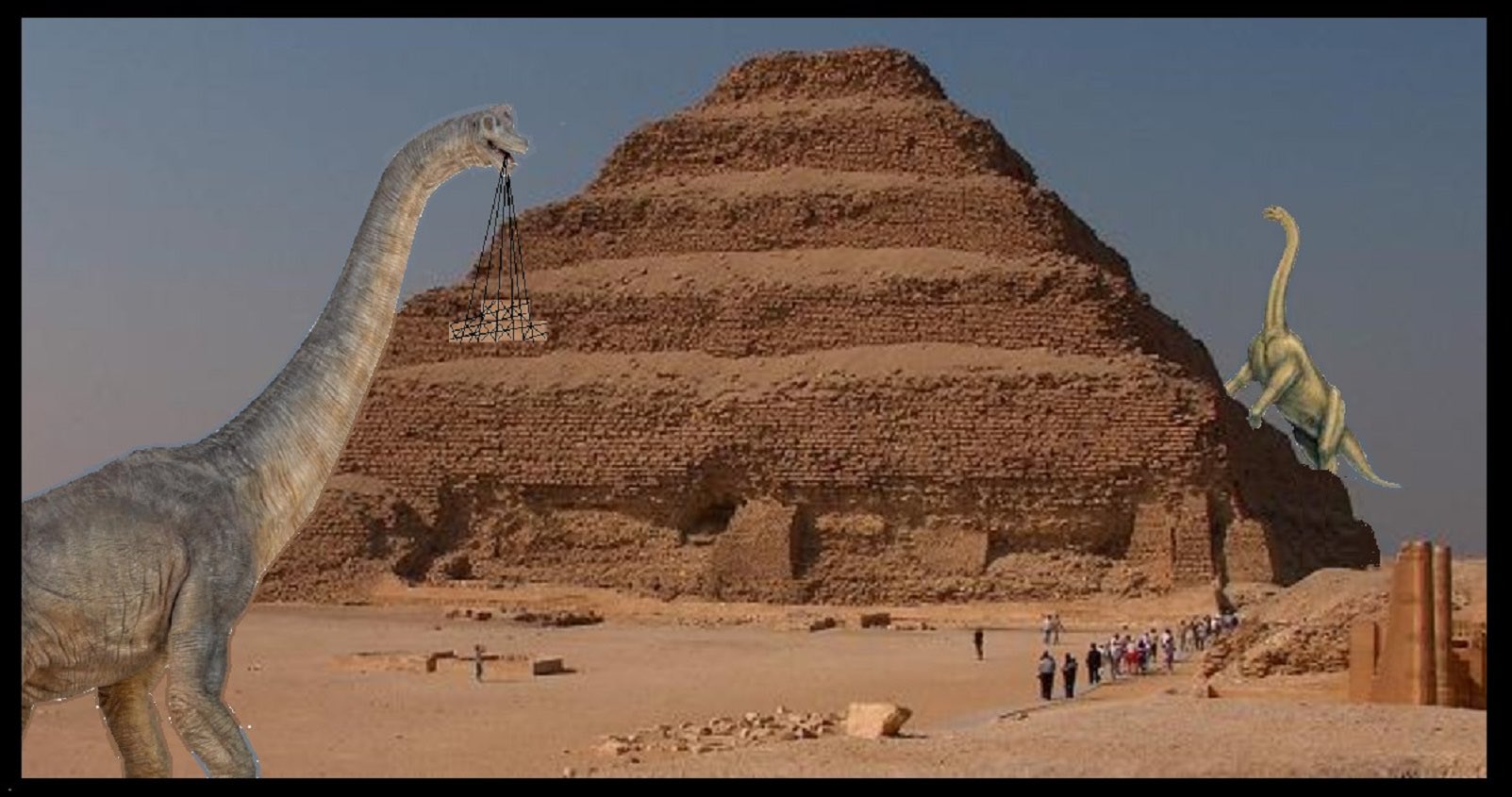Cairo, Egypt | A team of archeologists at the University of Cairo lead by Egyptologist Nabir Ibn Al-Sammud has uncovered ancient papyri and a number of stone palettes dating back to 3,500 BC which could prove ancient Egyptians might have lived amongst dinosaurs.

Astonishingly, the papyri were written by men who participated in the building of the Great Pyramid, the tomb of the Pharaoh Khufu, and mention the use of “beastly creatures” of “enormous size” according to Professor Al-Sammud.
The outlandish claim would have been rapidly dismissed if it did not come from one of Egyptology’s most eminent figures and has definitely come as a surprise to the scientific community.
“ I understand our present view of human history is completely different from what we are proposing, but based on these ancient papyri we must consider the possibility that dinosaurs may have lived amongst ancient Egyptians and were possibly tamed to carry the huge blocks that compose the pyramids ”
– Professor Nabir Al-Sammud, Egyptologist

The Narmer Palette, also known as the Great Hierakonpolis Palette or the Palette of Narmer, is a significant Egyptian archeological find, dating from about the 31st century BC, containing some of the earliest hieroglyphic inscriptions ever found and also believed by some to depict living dinosaurs.
An unexpected discovery
Surprisingly, the discovery of the ancient papyri and 26 stone cosmetic palettes bearing carved decoration and hieroglyphic writings was made in a nearby cave only a few kilometers outside modern Cairo.
The team of researchers believe that the caves had served as a kind of boat storage depot during the fourth dynasty of the Old Kingdom, about 4,600 years ago.

“We unearthed entire rolls of papyrus, some a few feet long and still relatively intact, written in hieroglyphics as well as hieratic, the cursive script the ancient Egyptians used for everyday communication,” explains phD student Fatima Al-Faya.
The papyri also mention “the noble Ankh-haf,” who was known to be the half-brother of the Pharaoh Khufu and is described as overseeing some of the construction of the Great Pyramid.
Ra Nt-Ka, the “God Beast”
The most surprising portions of the ancient texts and stone palettes are concerning Ra Nt-Ka, translated as “God beast” which was presumably tamed and used to carry the large limestone blocks that compose the pyramids.

“For centuries it was presumed that Ra Nt-Ka was possibly a whale, but here we have descriptions of Ra Nt-Ka delving in water as well as on land, and the papyri mention that the animal “of great stature” was used to carry materials used during the construction of the pyramids,” explains Prof Al-Sammud, visibly exhilarated.
“They are described as tamed beasts of burden who “eat of the Niles grass”, whose tail when lashed “can kill an army of men” and “whose necks reach out to the sky”, which lets us believe the creature could depict a species of brontosaurus of some kind” he adds.
Dinosaurs in Egypt
This incredible discovery occurs decades after paleontologists have unearthed the first fossils of a colossal new species of dinosaur in Egypt, one of the heaviest creatures to have walked the Earth.

Its name, Paralititan, means tidal giant. The long-necked, long-tailed vegetarian could have straddled a modern African elephant, say experts.
“We can’t speculate if this is the species of dinosaur that may have lived amongst ancient Egyptians but fossil remains are fairly prevalent in the Nile region and these amphibious beasts were definitely common in the area at one time” explains fellow Egyptologist, Helmut Ferrlug of the University of Berlin.
One recent skeleton finding in 2014 proved to be a new species of Titanosaurus, a group of long-necked, long-tailed, plant-eating dinosaurs that includes some of the largest animals ever. The period in which Paralititan lived is still a mystery to paleontologists.








